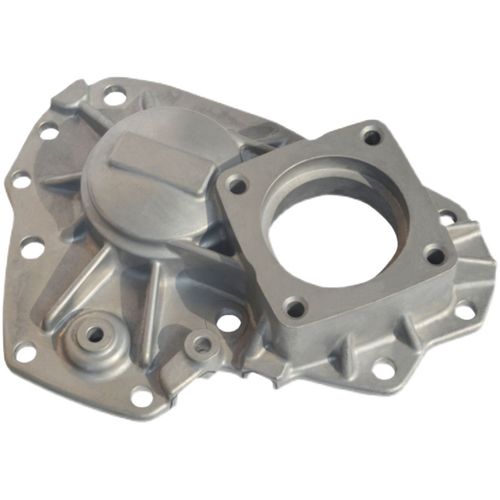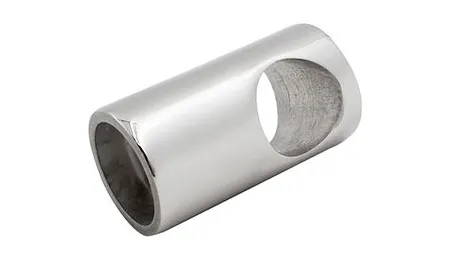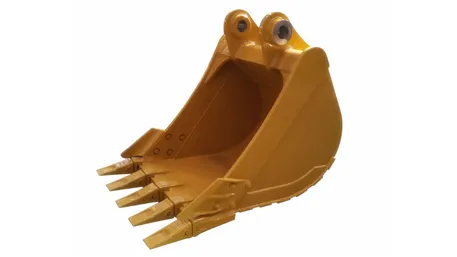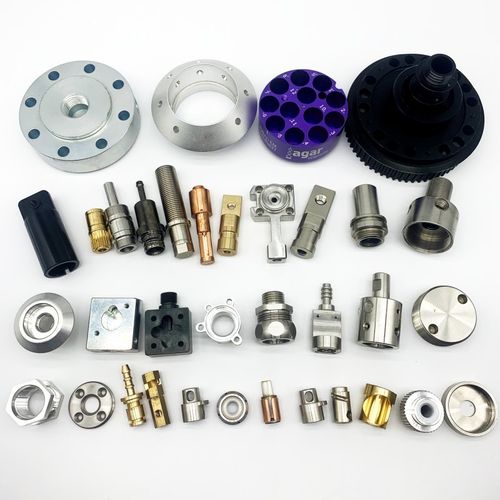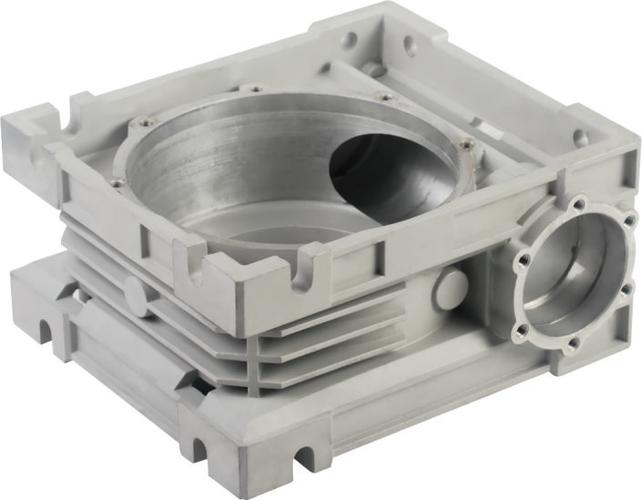In the precision stage of modern manufacturing, the die casting process, with its unique advantages, has become a key force in shaping complex metal parts. As an engineer deeply engaged in the die casting field, I will take you on an in-depth exploration of the world of die casting, comprehensively interpreting this precision manufacturing technology from basic principles to cutting-edge applications, and from process optimization to challenge response.
Fundamentals of Die Casting: Principles and Core Elements
Die casting, in simple terms, is a process in which molten metal is rapidly injected into a mold cavity under high pressure, and high-precision parts are obtained after cooling and solidification. The core of this process lies in the perfect coordination of “pressure” and “speed”, just like a precision dance where every link is crucial to the quality of the final product.
Taking aluminum alloy die casting as an example, in the preparation stage, we need to carefully adjust the alloy composition to ensure it has good fluidity and mechanical properties. Subsequently, the molten aluminum alloy is accurately injected into the shot sleeve of the die casting machine—this is like the “backstage preparation area” of the stage, where everything is ready for the wonderful performance to begin.
With the rapid advancement of the injection plunger, the aluminum alloy melt rushes into the mold cavity at an extremely high speed (several meters per second) under high pressure (usually up to thousands of psi). In this process, pressure acts like a strict commander, ensuring that the metal melt can accurately fill every corner of the mold, even the most complex shapes can be perfectly replicated. Speed, on the other hand, is like an agile dancer, completing the filling action quickly and gracefully, reducing the oxidation of the metal melt and the entrainment of gas, thus laying the foundation for high-quality castings.
Inside the mold cavity, the metal melt cools and solidifies rapidly, just like the frozen moment after a dancer completes a movement—at this point, the shape and performance of the casting are determined. At this time, the cooling system acts as a thoughtful assistant: by precisely controlling the mold temperature, it ensures the uniform cooling of the metal melt and reduces the occurrence of defects such as shrinkage cavities and deformation.
When the casting is fully solidified, the mold opens, and the ejection system pushes the casting out smoothly. The wonderful performance of die casting comes to an end, and a high-precision, smooth-surfaced die casting appears before us.
Process Optimization: The Key to Improving Quality and Efficiency
In actual production, process optimization is a daily compulsory course for us engineers. By continuously adjusting process parameters, we can improve production efficiency and reduce costs while ensuring product quality.
Pressure Control: Precise Force
Pressure is the soul of the die casting process. During the injection process, we usually adopt segmented pressure control to meet the requirements of different stages. In the initial stage, lower pressure allows the metal melt to fill the runner smoothly, avoiding turbulence and gas entrainment. When the metal melt approaches the cavity, the pressure is quickly increased to enable rapid filling of the cavity, ensuring clear contours of the casting. After filling is completed, higher intensification pressure is applied to compact the casting, improving its density and reducing internal defects such as gas pores and shrinkage porosity.
For example, when producing large and complex castings like automobile engine blocks, precise pressure control ensures uniform internal structure of the casting, and the strength and air tightness of key parts meet strict application requirements.
Speed Regulation: The Art of Speed Balance
Injection speed is also crucial. An appropriate speed ensures that the metal melt fills the cavity before solidification, while avoiding gas entrainment and mold erosion caused by excessive speed. For thin-walled castings, we need a higher injection speed to ensure that the metal melt can quickly fill the thin-walled parts and avoid cold shut defects. For thick-walled castings, the speed can be appropriately reduced to reduce the impact and turbulence of the metal melt.
In practical operation, we combine mold structure, casting shape and alloy characteristics, and precisely set the injection speed curve through the speed regulation system of the die casting machine to achieve optimized speed control.
Temperature Management: The Mystery of Thermal Balance
Temperature is an important factor affecting die casting quality. The stability of mold temperature has a significant impact on the forming quality, dimensional accuracy and production efficiency of castings. We usually use a circulating water cooling system to control the mold temperature, ensuring it fluctuates within an appropriate range. For some complex molds, we also adopt conformal cooling channel design: through 3D printing technology, cooling channels that fit the shape of the mold cavity are manufactured to achieve more uniform temperature distribution.
At the same time, the pouring temperature of the metal melt also needs strict control. Excessively high pouring temperature increases the gas absorption and oxidation degree of the metal melt, leading to gas pores and slag inclusion defects in the casting; excessively low pouring temperature affects the fluidity of the metal melt, resulting in insufficient filling. Through precise temperature measurement and control systems, we can ensure that the metal melt is die-cast at the optimal temperature.
Material Selection: Adapting to Process and Performance Requirements
The wide application of die casting process is inseparable from the rich variety of material choices. Different alloy materials have their own unique performance characteristics, and we need to carefully select suitable materials according to the application requirements and process characteristics of the casting.
Aluminum Alloy: The First Choice for Lightweight
Aluminum alloy has become one of the most widely used materials in the die casting field due to its advantages of low density, high strength and good corrosion resistance. In industries pursuing lightweight such as automobile and aerospace, aluminum alloy die castings can be seen everywhere. For example, after adopting aluminum alloy die casting for parts such as automobile engine blocks, cylinder heads and wheel hubs, not only can the weight of the whole vehicle be effectively reduced and energy consumption be lowered, but also the strength and heat dissipation performance of the parts can be improved.
Common die casting aluminum alloys include Al-Si series, Al-Mg series and Al-Zn series. Among them, Al-Si series alloys are the most commonly used die casting aluminum alloys due to their good casting performance and mechanical properties. By adjusting the content of silicon, magnesium, copper and other elements in the alloy, we can further optimize the alloy performance to meet the needs of different products.
Zinc Alloy: Combination of Precision and Low Cost
Zinc alloy has the characteristics of low melting point, good fluidity, high casting accuracy and excellent surface quality, and is widely used in industries such as electronics, home appliances and toys. For example, mobile phone casings, structural parts of electronic equipment and toy accessories are often manufactured by zinc alloy die casting.
Compared with aluminum alloy, zinc alloy has lower cost, and its die casting process is relatively simple—it can be die-cast under lower pressure, and has lower requirements on molds. This makes zinc alloy an ideal choice for products that are cost-sensitive but have high requirements on precision and surface quality.
Magnesium Alloy: The Potential of Ultra-light Materials
Magnesium alloy is currently the lightest metal structural material in industrial applications, with a density only 2/3 that of aluminum alloy and 1/4 that of steel. Magnesium alloy has good specific strength, specific stiffness, shock absorption and electromagnetic shielding properties, and has great application potential in aerospace, automobile and electronics fields.
However, magnesium alloy has active chemical properties and is prone to oxidation and combustion during the die casting process, which puts higher requirements on the die casting process and equipment. By using special protective gases and optimizing mold design and process parameters, we can effectively control the oxidation problem during magnesium alloy die casting and give full play to the advantages of this ultra-light material.
Copper Alloy: Representative of High Thermal Conductivity and High Strength
Copper alloy has excellent thermal conductivity, electrical conductivity, wear resistance and high strength, and plays an important role in fields with extremely high performance requirements such as power electronics, mechanical manufacturing and aerospace. For example, heat dissipation modules of 5G base stations, motor brushes and parts of aero-engines are often manufactured by copper alloy die casting.
Due to the high melting point and poor fluidity of copper alloy, higher pressure and temperature are required during the die casting process, and the requirements on mold materials and process control are more stringent. However, through continuous technological innovation and process optimization, copper alloy die casting technology is also developing, providing strong support for the development of related industries.
Application Fields: The Wide Stage of Die Casting Process
With its advantages of high precision, high efficiency and strong ability to form complex shapes, the die casting process has been widely used in many fields.
Automotive Industry: Promoting Lightweight and Integration
In the automotive industry, the die casting process plays a crucial role. With the development trend of automotive lightweight and integration, more and more automotive parts are manufactured by die casting. From key parts such as engine blocks, cylinder heads and transmission housings to body structural parts, wheel hubs and interior parts, the die casting process is widely applied.
For example, the emergence of integrated die casting technology integrates automotive body structural parts that were originally composed of multiple parts (such as rear floor and subframe) into one piece through a single die casting process. This greatly reduces the number of parts and welding processes, improves production efficiency, reduces the weight of the whole vehicle, and at the same time enhances the overall strength and rigidity of the body. The application of this technology not only brings cost advantages to automobile manufacturers, but also makes an important contribution to the improvement of the range of new energy vehicles.
Electronics Industry: Pursuing Precision and Thinness
In the electronics industry, as electronic products continue to develop towards miniaturization, thinness and high performance, the requirements for the precision and surface quality of parts are getting higher and higher. The die casting process, with its characteristics of high precision and high surface quality, has become one of the preferred processes for electronic part manufacturing.
Mobile phone casings, tablet computer frames, heat dissipation modules of laptops and connectors of electronic equipment—these precision electronic parts can achieve high-precision forming of complex shapes through the die casting process, meeting the strict requirements of electronic products for appearance and performance. At the same time, the die casting process can also be integrated with other processes such as insert die casting and surface treatment to further enhance the functionality and added value of products.
Aerospace: Meeting High-performance Requirements
The aerospace field has extremely high performance requirements for parts, which need materials with high strength, low density, high temperature resistance and fatigue resistance. The application of the die casting process in the aerospace field is mainly concentrated on the manufacturing of parts that are weight-sensitive and have complex shapes, such as aero-engine blades, casings and landing gear parts.
By using high-performance materials such as aluminum alloy, magnesium alloy and titanium alloy, combined with advanced die casting processes and quality control technologies, we can manufacture parts that meet the strict requirements of the aerospace field. For example, the application of titanium alloy die castings in aero-engines not only reduces the weight of the engine and improves fuel efficiency, but also enhances the reliability and service life of the engine.
Other Fields: The Pervasive Manufacturing Force
In addition to the main fields such as automobile, electronics and aerospace, the die casting process is also widely used in many industries such as medical devices, hardware tools, toys and furniture. In the field of medical devices, the die casting process can manufacture high-precision, smooth-surfaced surgical instruments and medical equipment parts; in the field of hardware tools, it can produce durable and aesthetically pleasing tool products; in the field of toys and furniture, it can manufacture various product accessories with novel shapes and rich colors.
It can be said that the die casting process has penetrated into all aspects of our lives, providing strong manufacturing support for the development of various industries.
Challenges and Solutions: Promoting the Sustainable Development of Die Casting Technology
Although the die casting process has made great progress, in practical applications, we still face some challenges and need to continuously explore new technologies and methods to address them.
Gas Pores and Shrinkage Porosity: The Difficulty in Quality Control
Gas pores and shrinkage porosity are common defects in the die casting process, which seriously affect the internal quality and mechanical properties of castings. Gas pores are mainly caused by gas entrainment during the filling process of the metal melt or the failure of gas in the mold cavity to be discharged in time; shrinkage porosity, on the other hand, is caused by insufficient feeding during the solidification process of the metal melt, resulting in tiny holes inside.
To solve the problem of gas pores, we usually adopt advanced processes such as vacuum die casting and oxygenated die casting. Vacuum die casting reduces the possibility of gas entrainment by extracting the gas in the mold cavity before die casting to reduce the air pressure in the cavity; oxygenated die casting fills the mold cavity with oxygen before die casting, so that the metal melt reacts with oxygen during the filling process, and the generated oxides are dispersed in the casting, thereby eliminating gas pore defects.
For shrinkage porosity defects, we can optimize the design of the gating system to ensure sufficient feeding of the metal melt during the solidification process; at the same time, we can adopt processes such as high-pressure die casting and squeeze casting to apply pressure during the solidification process of the casting, improve the density of the casting, and reduce the occurrence of shrinkage porosity defects.
Mold Life: The Key to Cost Control
Molds are an important part of the die casting process, and their service life directly affects production costs and production efficiency. During the die casting process, molds are subjected to high temperature, high pressure and the scouring and impact of high-speed metal melt, which are prone to wear, thermal fatigue and deformation, leading to shortened mold life.
To improve mold life, we need to start from multiple aspects such as mold material selection, mold structure design, heat treatment process and surface treatment technology. In terms of mold materials, we will select mold steels with high strength, high toughness, high temperature resistance and wear resistance, and improve their comprehensive performance by optimizing the chemical composition and heat treatment process of the materials; in terms of mold structure design, we will adopt reasonable parting surface, gating system and cooling system design to reduce stress concentration and thermal fatigue of the mold; in terms of surface treatment technology, we will use surface treatment methods such as nitriding, hard chrome plating and PVD coating to improve the hardness and wear resistance of the mold surface and reduce the friction between the metal melt and the mold surface.
Green Die Casting: The Requirement of Sustainable Development
With the increasing awareness of environmental protection, green die casting has become an inevitable trend in the development of the die casting industry. Green die casting is mainly reflected in energy conservation and emission reduction, resource recycling and reduction of environmental pollution.
In terms of energy conservation and emission reduction, we can optimize the die casting process parameters to improve the energy utilization rate of the die casting machine; adopt new energy-saving equipment and technologies such as servo drive systems and induction heating melting furnaces to reduce energy consumption. In terms of resource recycling, we can recycle and process the waste generated during the die casting process, and reuse it for production after remelting, so as to improve resource utilization and reduce production costs. In terms of reducing environmental pollution, we can use environmentally friendly auxiliary materials such as release agents and cleaning agents to reduce the emission of harmful substances; at the same time, we can strengthen the treatment of waste gas, waste water and waste residue generated during the die casting process to ensure up-to-standard discharge.
Conclusion
As a die casting engineer, I have witnessed the rapid development and wide application of the die casting process in the past few decades. From the traditional die casting process to today’s integrated die casting and intelligent die casting, every technological breakthrough has brought new opportunities and challenges to the manufacturing industry. In the future, with the continuous progress of related fields such as materials science, computer technology and automation technology, the die casting process will surely usher in a more brilliant development.
We engineers will continue to explore and move forward in this ocean of technology, continuously optimizing processes and innovating technologies to address various challenges and provide higher-quality, more efficient and greener die casting solutions for various industries. Let us work together to continue writing wonderful chapters on the precision stage of the die casting process and contribute our strength to promoting the development of the manufacturing industry.
